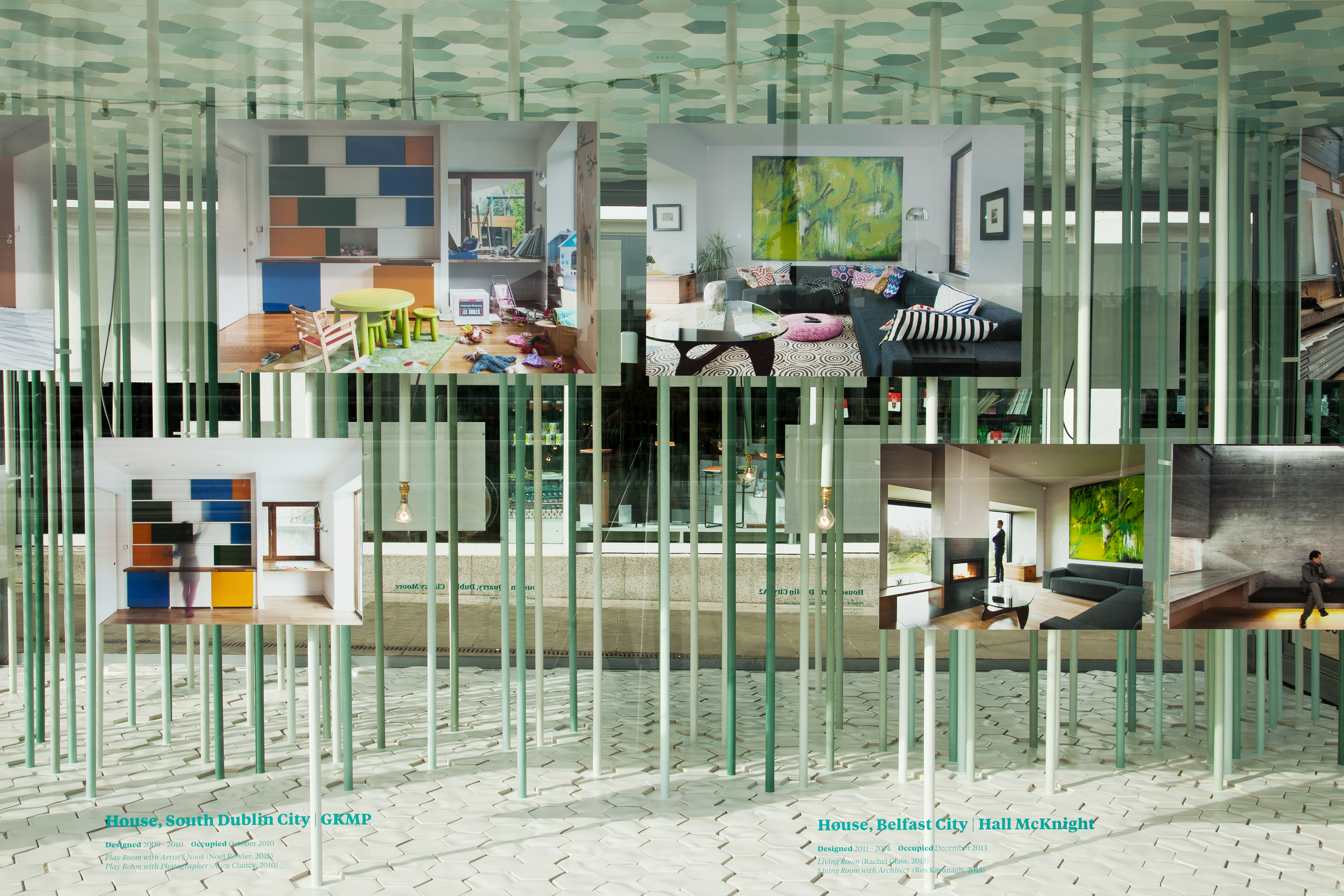Read the full article here.
New Horizon – Architecture from Ireland – Irish Design 2015, 1 – 30 June
Architecture festivals, biennales, triennials and design weeks are often at their best when they have a distinct focus, a singular point of convergence on which to draw out insights and ideas. Although each year there’s a new theme, the London Festival of Architecture could be accused of being too broad, an umbrella term for various events already taking place in the city. It is with some relief that this year, for the first time in its 11-year history, LFA singled out one country – Ireland – as its focus country.
As part of Irish Design 2015, a year-long international celebration, Ireland presented the work of five young practices in the form of three colourful and collaborative installations across the capital. This showcase, titled New Horizon_ architecture from Ireland, and curated by Nathalie Weadick and Raymund Ryan, championed a new wave of emerging Irish architects, all characterised by similar social concerns and a willingness to collaborate within and across disciplines.
The exhibition takes its inspiration from a group of eight internationally renowned Irish architecture practices, including O’Donnell and Tuomey, Grafton Architects and Heneghan Peng Architects, which collaborated as Group 91 to win the masterplan competition for Temple Bar in 1991.
This younger generation, born after the Seventies and educated during the days of the Celtic Tiger, have similarly all found resourceful ways to weather the economic downturn. Dublin-based architect Emmett Scanlon presented Nine Lives, an exhibition of nine rooms designed by nine Irish architects, in the glass tank in front of London’s Design Museum.
All too often photos of new buildings, especially residential projects, are devoid of life, unoccupied by people or the clutter of everyday life. This refreshing exhibition, however, showed rooms as they are in real life, in flux and ever-changing, complete with tangled wires, ugly televisions and children’s toys strewn across the floor.
‘Nine Lives proposes that homes are in fact made by design and through use, by production and consumption – both creative processes – are different but equal,’ says Scanlon. ‘These stories – containing people’s ideas, needs and dreams of how to work, dwell or play – continue to develop through occupation and use.’ As such, Nine Lives was an original response to the Festival’s theme Work in Progress, illustrating that buildings aren’t finished simply once they’ve been built but are an ongoing story.
The exhibition also touched on the ongoing story of Ireland’s housing crisis – each of the 90 poles displayed in the Tank represented the 90,000 housing units needed by the year 2020, a daunting task for the small group of 2,478 registered architects in Ireland. This may have been a small exhibition, easily missed on the Festival trail, but it had the potential to spark wider debates and discussions about the future of Irish architecture.
Further north, two vivid temporary structures, one bright-red, one yellow, occupied the drafty, paved space of Lewis Cubitt Square, adjacent to the Central Saint Martins building in King’s Cross. The Red pavilion was a double-storey, James Stirling-esque affair designed by three Dublin practices, Clancy Moore, TAKA and Steve Larkin. A mash-up of formal elements – park benches, doorways, arcades and loggias – the timber and OSB structure was painted red and grounded by a row of fat, pre-cast concrete columns.
Aside from the scattered park benches already in the square, it provided a much-needed place to gather and meet. ‘We wanted to make a collective statement about “the city” and civic architecture. We believe the city needs multiple voices for vitality,’ explains Alice Casey and Cian Deegan, of TAKA Architects.
The Yellow pavilion was a more intimate space, made up of a series of sheet-timber arches and created by Belfast practice Hall McKnight Architects. Inside, the project presented 1,000 reclaimed Belfast bricks, some of them selected and modified by students from the University of Ulster.
‘Our project recognises the city as an open project – alive, ongoing. The pavilion is a vehicle to carry a collection of bricks that speaks of the city as a work in progress,’ say Alastair Hall and Ian McKnight of Hall McKnight, ‘Bricks seem to absorb and hold memories — like little citizens of construction… occupying both the old city and expecting the new one.’
Just as these portray the city as a work in progress, so this initiative too is an ongoing story. In October the work of three other practices (A2, Ryan Kennihan and GKMP) will show at Chicago’s first Architecture Biennial, while in December, Urban Agency and AP+E will create an installation for the sixth Shenzhen Hong Kong Bi-City Biennale of Urbanism\Architecture. These objects may only be around temporarily, but Ireland’s voice will continue to be heard long after they’re gone.
The Brutalist Playground, Architecture Gallery at RIBA, London, Until 16 August

